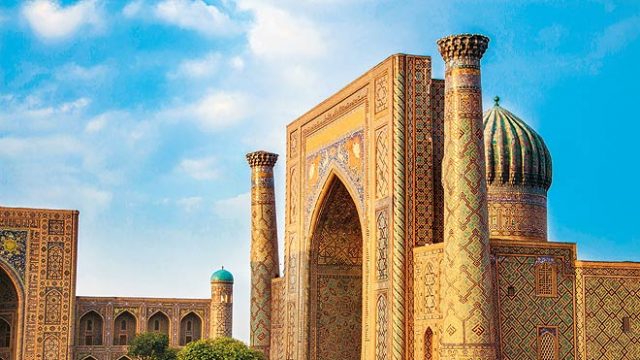Central Asia today chiefly comprises five independent republics, often called the ’Stans: Turkmenistan, Uzbekistan, Tajikistan, Kyrgyzstan and the largest of them all, Kazakhstan (a few compilations include Afghanistan). These extraordinary destinations offer many unrivalled experiences, but ease in travel planning isn’t one of them. Contrarily, your itinerary will have to be almost blueprinted over dates (can be flexible, so ask for more time than you think you need, factoring room for delays) and points of entry and exit (inflexible). Rules and red-tapism vary dramatically across the region. For example, you can’t get anything longer than a 5-day transit visa in Turkmenistan, easily among the most confounding nations to visit, unless you are a part of a tour group and accompanied by a guide everywhere outside Ashgabat, which jacks up costs. In another example, travel along the Pamir Highway, which is highly recommendable, requires an additional GBAO permit from the same embassy that issued your visa (it’s included in the fee, but you won’t get it unless you ask), plus transport is expensive and difficult to find, unless you want to hitchhike. Independent travel is certainly possible and rewarding, but I would still advise you to take the help of crossborder operators like www.stantours.com, www.advantour.com, www.mircorp.com or www.steppejourneys.com at least for the paperwork. Start planning by looking up the 3-week itineraries featured on these portals, or on sites like www.caravanistan.com or www.goatsontheroad.com, to arrive at your own. You must know that large countries with many cultural and natural wonders simply won’t submit to being seen in 6-8 days (Kazakhstan is not far behind India in terms of area).
You have time to prepare: Central Asia’s diverse landscapes are most accessible in the spring and summer (April to September). Winters are harsh. In Kyrgyzstan, which is very suited to your interests, much of the rural accommodation shuts down in winter, which sets in as early as October, and yurts are packed away in the biting cold.
Speaking of Kyrgyzstan, it has a laudable Community Based Tourism (www.cbtkyrgyzstan.kg/en) network firmly in place, which makes its stunningly beautiful topography of rugged mountains and pastoral valleys very popular among the few travellers who make it to Central Asia. It’s also here that you can easily find homestays, often in traditional yurts, with ample opportunities to interact with friendly and hospitable locals. Kyrgyzstan also offers visa-free access to visitors from 40 countries (India is not among them, unfortunately, but processing is generally quick). Plus it’s next door to your must-see wonders in Uzbekistan, also popular with tourists, which means we have ticked two countries already. www.meta.tj is a similarly useful resource for Tajikistan.
Frugal travellers can expect to spend about $50 per person per day, and more in the urban centres and tourist hotspots. ATMs are awfully thin on the ground and their exchange rates are exorbitant; only cash works, that too in a roaring black market where tourists can get ripped off if they aren’t careful (try to transact in crowded places like markets). Expect to lug around your entire monetary requirements in cash, which you have to convert into thick wads of deflated local currencies as and when you need them. Visa and MasterCard can be a back-up.
Central Asia is really quite safe for travel, but some areas, like the Fergana Valley and sections of the Pamir Highway, are troubled sporadically by armed conflict. Check safety on your route by asking for current updates at your local homestay or hotel. Moreover, each country has its own languages and dialects but Russian unifies the region: you would do well to keep a phrasebook handy and pick up some rudimentary Russian language skills.
Buses, mashrutkas (minivans), trains, and local cars that double up as shared taxis (most efficient and comfortable), are all good ways to get around the whole of Central Asia. Ex-Delhi flights to and from Tashkent, Bishkek, Dushanbe and Almaty range between Rs 24,000 and Rs 28,000 one way (there are only a couple of connections to Ashgabat and they cost over Rs 30,000).




